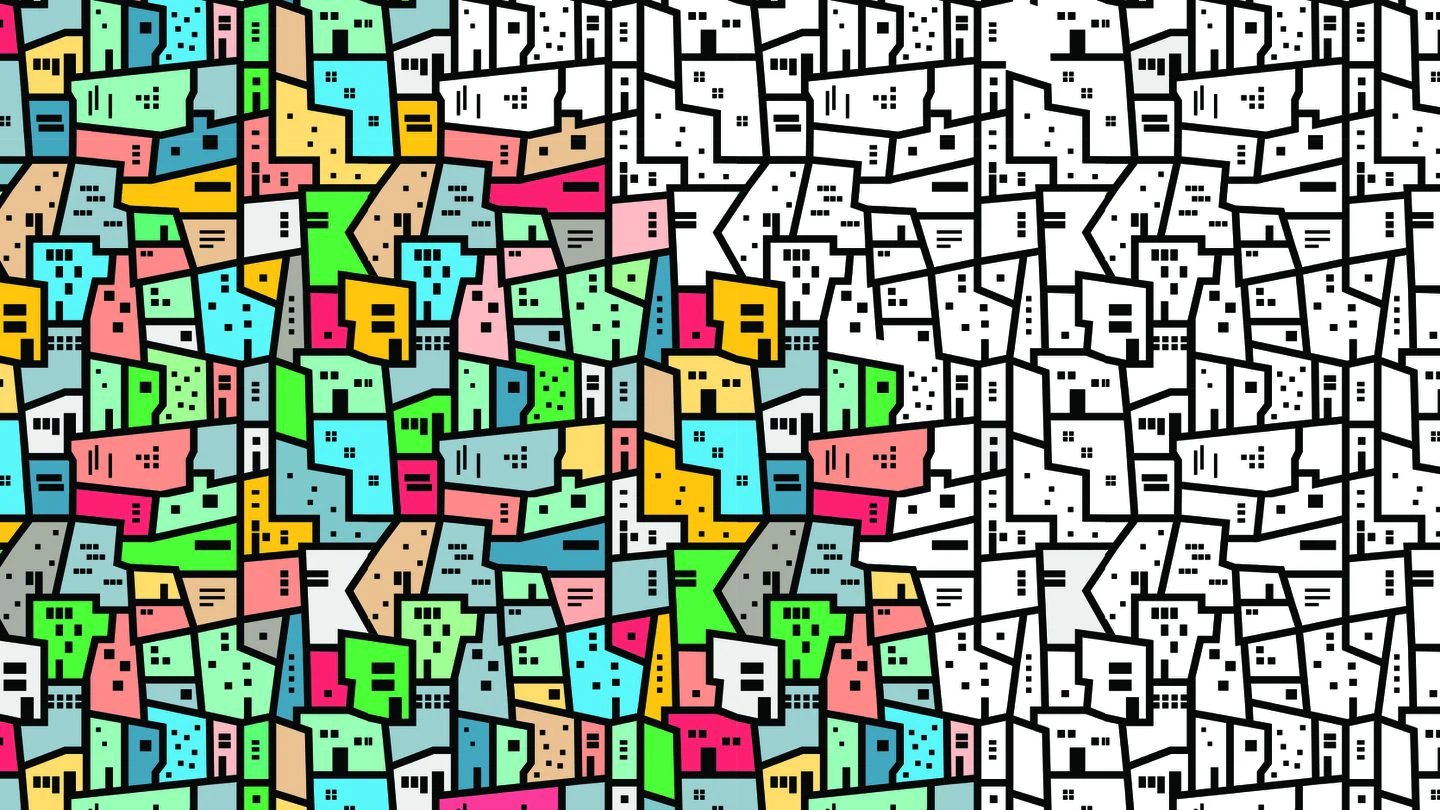Housing Will Test White Support of Black Lives
Housing will test white support for Black lives
It's one thing to rally against racism. But will white people finally make it feasible for many more minorities to move into their neighborhoods?
By Noah Y. KimUpdated August 21, 2020, 4:00 a.m.

As a young housing activist in the early part of this decade, Jesse Kanson-Benanav started to notice that many liberal residents of Cambridge were hostile to integration. Whenever a developer proposed a few units of affordable housing, white homeowners would line up in opposition, citing concerns about parking or residential “character.” Although they said they valued diversity, they worked tirelessly to thwart the developments that would actually make it more feasible for Black and brown families to move into their neighborhoods.
“It really struck me as out of step with the image that Cambridge purports as a progressive and welcoming community,” he said.
Kanson-Benanav, now the president of Abundant Housing Massachusetts, recently thought of those Boston-area liberals when a friend sent him a photo of a lawn in Newton with three yard signs. Two pushed back against affordable housing projects, reading: “Right Size Newton” and “Right Size Riverside.” The third sign said, “Black Lives Matter.”
Increasing the housing supply for Black Americans would be one of the quickest and most effective ways to bring about a more just society. Even now, the legacies of “red-lining” and other forms of segregation, predatory lending, and housing discrimination continue to push many Black Americans away from wealthier, better-schooled neighborhoods. But efforts to fix this problem by building affordable housing in suburban communities and affluent parts of cities have often been met with anger from white residents worried about “density” and “crowding.” White progressives in particular have a long history of refusing to integrate their communities, even as they vocally support civil rights movements.
At a time when the Black Lives Matter movement has record levels of support, large, even majority-white crowds have gathered in cities across America to call for the end of systemic racism and police brutality. To achieve real equity, though, white allies will have to move beyond symbolic displays of solidarity and actually help Black Americans get into their neighborhoods.
Advertisement
ONE OF OUR great societal myths is that Black and white neighborhoods are separate because Americans like to live alongside people with shared backgrounds or because poor and rich people pick the neighborhoods they can afford. The reality is that federal and local governments segregated communities through elaborate feats of social engineering.
In the 1940s and ’50s, the federal government created the suburbs by insuring home mortgages and offering subsidies to developers who mass produced single-family homes. As a result, suburban subdivisions began to sell at rates easily affordable to Black and white Americans alike. But the Federal Housing Administration incentivized developers to keep the suburbs white-only, refusing to grant loans unless there were physical barriers between people of different races, such as highways and, in at least one instance, an actual wall. Oftentimes, Black Americans were explicitly barred from suburban homeownership by leases that forbid renting or selling to “any person other than members of the Caucasian race.” The federal Public Works Administration even went so far as to purposely segregate previously integrated neighborhoods, building separate housing projects for Black and white families and listing each development’s racial designation. These programs concentrated Black Americans in poverty-stricken areas without easy access to jobs, health care, or transportation.
After the Supreme Court deemed segregation unconstitutional in a series of cases, white cities and suburbs fought to maintain the old layouts anyway, passing local zoning restrictions that served to prevent Black Americans from moving into their communities. Since the restrictions had to appear race-neutral to be legal, they relied on economic means to keep out Black Americans, who had not accumulated wealth at the same rate as whites because of segregationist housing programs. Zoning requirements typically enforced minimum lot sizes or forbid developers from building low-income housing in all-white neighborhoods, rendering homes in those communities unaffordable to Black buyers and renters. Many of these same ordinances continue to ensure that Black and white Americans remain separate and unequal.
The effects have been disastrous. Effectively barred from high-quality housing, Black Americans stayed renters, often in economically depressed areas, while white Americans gained hundreds of thousands of dollars in equity as their homes appreciated in value. As Richard Rothstein writes in his book “The Color of Law,” the modern wealth gap between Black and white households is entirely attributable to this difference. As of 2016, the median Black family had only 8.7 percent as much wealth as the median white family. In the greater Boston area, the median net worth of non-immigrant African American households was $8 in 2015, while the median net worth of white households was $247,500. Housing inequality has also limited educational opportunities for Black children by concentrating them in the same underfunded schools, contributed to mass incarceration and police brutality by ghettoizing Black Americans in over-surveilled neighborhoods, and even shortened Black life expectancies by placing Black people in polluted areas with poor access to medical care.
What this means is that there is an obvious contradiction between supporting social justice movements and trying to maintain the segregated system behind almost every modern racial disparity. “When you talk about preserving the character of a community that exists because of oftentimes intentional racist exclusion, you’re really perpetuating the white supremacy that post-World War II suburban expansion was built upon,” said Kanson-Benanav.
But even in an era of heightened racial consciousness, efforts to undo exclusionary zoning or build low-income housing in white neighborhoods tend to trigger fierce backlashes. Adriane Musgrave, a former candidate for the Cambridge City Council, still remembers meeting a woman who talked enthusiastically about wanting to empower the Black community but quickly grew hostile at the mention of the Frost Terrace apartments, an affordable housing development under construction near Porter Square. The woman claimed that she was planning to leave the area once the apartments were built because they were going to “ruin the neighborhood” and “bring drugs and loud music.”
Musgrave had previously been booed, hissed, and berated for speaking in favor of public housing, but the encounter with the woman still shocked her. “I’m sure she thinks she’s super progressive,” Musgrave said. “But she didn’t want to live next to lower-income people of color.”
André Leroux, founder of the Great Neighborhoods Program, a network of advocates for affordable housing and zoning reform, believes that most white progressives are able to hold these contradictory stances because they simply lack historical knowledge. “I think a lot of people are not aware of the history of segregation and how our communities became segregated through housing and zoning policies and planning,” Leroux said. “People just assume that this is the way that it is.”
Another reason housing reform has failed to gain momentum is that white residents want the physical characteristics of their neighborhoods to remain the same. Many of them worry that new developments will ruin the qualities that attracted them to low-density areas in the first place: the wide open spaces, the greenery, the direct sunlight, the easy parking. It’s easy to understand why homeowners would want to hold onto these benefits, but the problem is that they are almost always maintained at the expense of other people who don’t have the privilege of choosing where and how they live. As Brookline Select Board Member Raul Fernandez put it, “All of those creature comforts are more important to [homeowners] than someone else’s ability to be able to afford to live in whatever condition that is.”
The irony is that the vast majority of affordable housing developments exist free of controversy after they get built. Most of them have little to no effect on crime rates and property values, and long-term residents eventually forget about the toxic political fights they generated. “After these drawn out battles, the lawsuits, the yelling, there’s not a peep about it,” Leroux said. “People just move on.”
Building off King’s legacy, Black Lives Matter has been trying to link affordable housing to racial equality for years with limited success. But as the movement gathers momentum, activists are hoping that real change is finally on the horizon. “I don’t think wealthy, educated white liberals can play ignorant any longer,” said Stacy Thompson, executive director of Liveable Streets Alliance. “There’s just so much data.”
It’s not clear whether the recent protest movement has had any tangible effects on debates over whether to build more housing in the suburbs. Some activists, like Beyazmin Jimenez, a board member of Kanson-Benanav’s organization, Abundant Housing Massachusetts, told me that the current racial climate has been an “awakening” for many white homeowners. “They’re now asking questions like, ‘Educate me. What are the policies that have led to our city being so segregated?’” she said. As an example, Jimenez cited the town of Hamilton, Mass., previously a hotbed of anti-affordable housing sentiment, which began to hold conversations around fair housing after the George Floyd protests.
Others, however, said that they haven’t seen sufficient evidence that the surge of racial awareness among white Americans has carried over into housing policy. “I don’t think enough people have made the connection yet,” says Jarred Johnson, also a board member at Abundant Housing Massachusetts. Adriane Musgrave told me that she is “not optimistic at all” that newly enlightened white liberals will bring about meaningful reform on the issue.
Their main fear is that the white homeowners supporting Black Lives Matter will abandon the movement once it begins to make material demands on their neighborhoods — just as many white liberals abandoned King in the ’60s. Although many northerners supported King in his campaign to desegregate the South, they quickly grew antagonistic when he shifted his attention to the racist housing policies in their own communities. By the time of his assassination, he had grown increasingly unpopular with the white liberals who had once heralded his activism. “People with privilege are comfortable signing a statement, are comfortable calling someone else racist, but that’s different than the long hard work of transforming a policy,” said Thompson.
There have already been worrisome signs that history is repeating itself. In June, the CT Mirror reported, the residents of Weston, Conn., marched through the town in solidarity with Black Lives Matter, chanting slogans and raising placards. Weston’s elected officials urged the overwhelmingly white crowd to fight systemic racism and examine their personal biases. Eight days later, those same officials voted unanimously to adopt a housing plan promoting the development of two-acre single-family homes. The town’s median sale price of $668,000 seems unlikely to dip. Weston is only 1.4 percent Black.
More tests of this new civil rights movement will occur at the local and state levels as white liberals are once again called upon to integrate their communities. President Trump grasps this, which is why he’s been tweeting lately that “suburban dreams” are endangered by the prospect of more low-income housing coming to prosperous communities. Essentially, Trump is goading suburbanites to weigh their fear of affordable housing against their commitments to racial justice, and he’s betting that white people will fall back on standard operating procedure.
Indeed, without an obvious boogeyman like a murderous cop to condemn, white allies will have to ask themselves if they are truly willing to make the compromises necessary to alleviate racial injustice. This would entail the elimination of single-family zoning, a receptiveness to building affordable developments, and increased tenant protections for low-income residents. In practice, it would look like Minneapolis — which recently reformed its zoning code to allow taller buildings with more units in areas that previously contained only single-family homes — or Newton, which just voted to approve the affordable Northland development after a contentious and drawn-out debate.
Jarred Johnson, one of the activists with Abundant Housing Massachusetts, told me that increasing levels of support for policies like defunding the police have made him cautiously optimistic about the prospect of substantive housing reform. “I wouldn’t underestimate the capacity of folks to change their minds,” he said. “I do think there’s a capacity for change. And hopefully when they have that light turned on them, they’ll respond in a positive way. I get it. It’s hard. Change is hard. But it’s essential.”
Noah Y. Kim is a writer based in Washington, D.C.
 A Flourish chart
A Flourish chart

